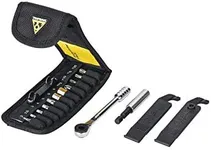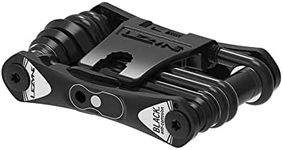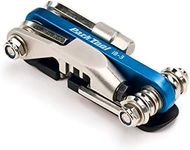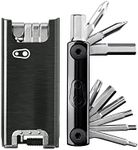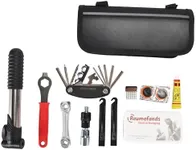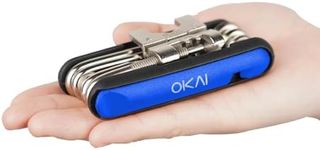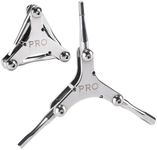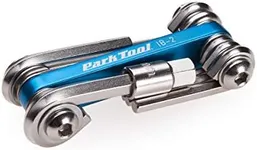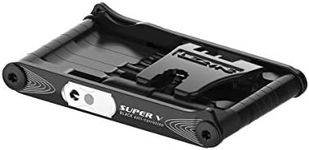Buying Guide for the Best Bike Multi-Tools
Choosing the right bike multi-tool can make a significant difference in your cycling experience. A bike multi-tool is a compact, portable tool that combines several different tools into one, allowing you to perform a variety of repairs and adjustments on the go. When selecting a bike multi-tool, it's important to consider the types of repairs you might need to perform, the size and weight of the tool, and the quality of the materials used. Here are some key specifications to consider when choosing a bike multi-tool and how to navigate them to find the best fit for your needs.Tool CountThe tool count refers to the number of individual tools included in the multi-tool. This is important because it determines the range of repairs and adjustments you can perform. Multi-tools can range from basic models with just a few essential tools to more comprehensive ones with 20 or more tools. If you only need to perform basic adjustments, a tool with 5-10 functions may suffice. However, if you want to be prepared for a wider range of repairs, look for a multi-tool with 15 or more functions. Consider your typical riding conditions and the likelihood of needing various tools when making your choice.
Tool TypesThe types of tools included in a multi-tool are crucial because they determine what kind of repairs you can perform. Common tools include hex wrenches, screwdrivers, chain breakers, tire levers, and spoke wrenches. Some multi-tools also include more specialized tools like Torx wrenches or a CO2 inflator. Think about the most common issues you encounter while riding and ensure the multi-tool includes the necessary tools to address those problems. For example, if you frequently need to adjust your derailleurs, make sure the multi-tool has the appropriate hex wrenches and screwdrivers.
Size and WeightThe size and weight of a bike multi-tool are important factors to consider, especially if you plan to carry it with you on long rides. A smaller, lighter tool is easier to carry and less cumbersome, but it may have fewer functions. Conversely, a larger, heavier tool may offer more functions but can be bulkier to carry. If you prioritize portability, look for a compact multi-tool that still includes the essential tools you need. If you don't mind carrying a bit more weight for the sake of having a more comprehensive tool, a larger multi-tool might be a better fit.
Material QualityThe quality of the materials used in a bike multi-tool affects its durability and performance. High-quality materials like stainless steel or hardened steel are more durable and resistant to rust and wear. Cheaper materials may save you money initially but can wear out quickly and may not perform as well. If you ride frequently or in harsh conditions, investing in a multi-tool made from high-quality materials is a wise choice. Look for tools with a solid construction and good reviews regarding their durability.
ErgonomicsErgonomics refers to how comfortable and easy the multi-tool is to use. A well-designed multi-tool should be easy to grip and manipulate, even with gloves on. Tools that are difficult to use can make repairs more challenging and time-consuming. When choosing a multi-tool, consider how the tools fold out and lock into place, and whether the overall design feels comfortable in your hand. If possible, try handling the multi-tool before purchasing to ensure it feels comfortable and intuitive to use.



